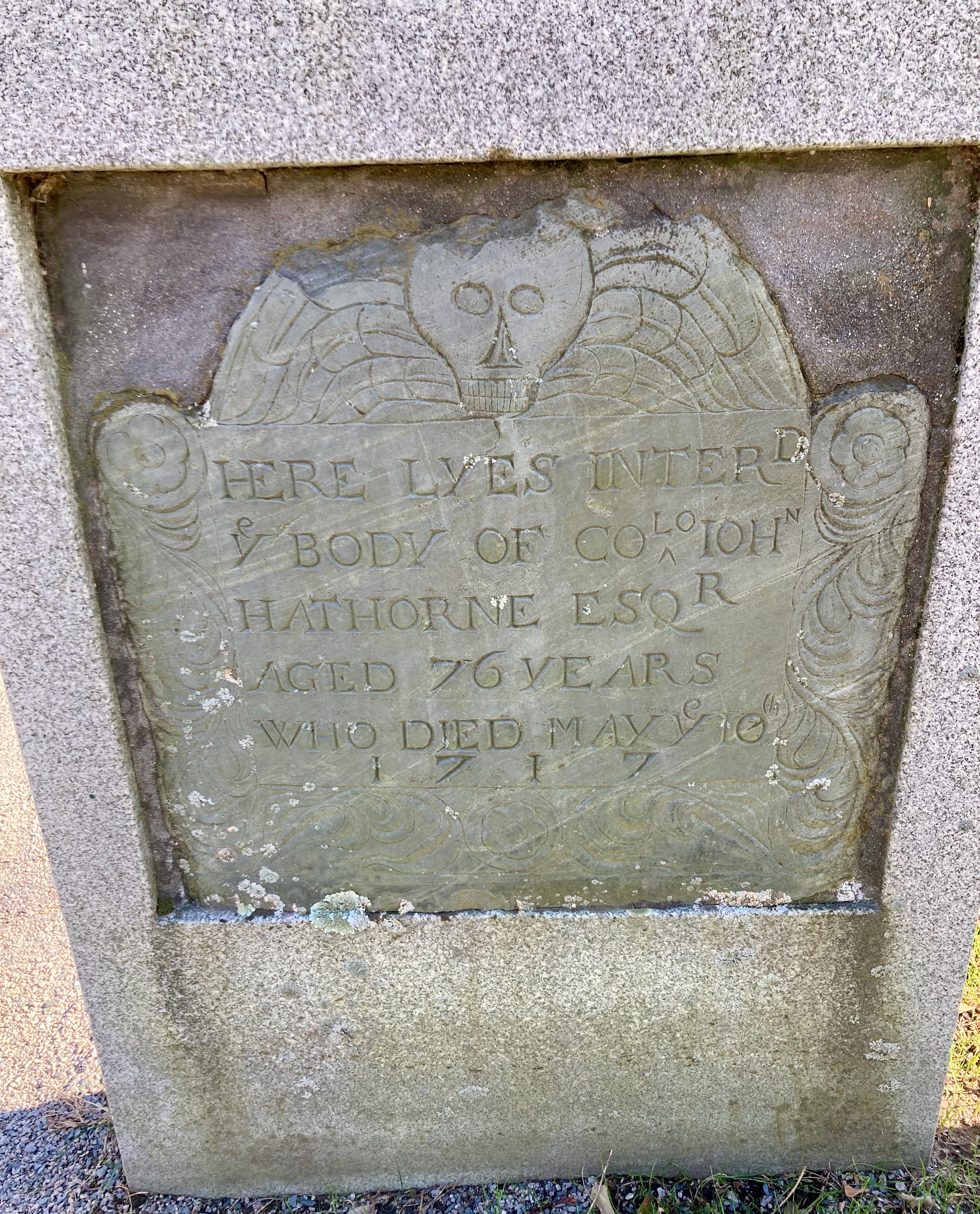|
John Hathorne
John Hathorne (August 1641 – May 10, 1717) was a merchant and magistrate of the Massachusetts Bay Colony and Salem, Massachusetts. He is best known for his early and vocal role as one of the leading judges in the Salem witch trials. Hathorne was absent from the list of men appointed to the Court of Oyer & Terminer in June 1692. That court relied heavily on the spectral evidence, examinations, interrogations, and affidavits previously conducted by Hathorne, co-signed by Jonathan Corwin, and recorded by Rev. Samuel Parris and/or Ezekiel Cheever Jr. On September 22, 1692, the date of the final eight executions, Hathorne was present at a meetingSewall Diary with Stoughton and Cotton Mather to discuss using court records in a new publication designed to promote the trials. Unlike Samuel Sewall, Hathorne is not known to have repented for his actions. He was a Patrilineality, patrilineal ancestor of writer Nathaniel Hawthorne. Life Hathorne's father, Major William Hathorne, was ... [...More Info...] [...Related Items...] OR: [Wikipedia] [Google] [Baidu] |
Salem, Massachusetts
Salem ( ) is a historic coastal city in Essex County, Massachusetts, located on the North Shore of Greater Boston. Continuous settlement by Europeans began in 1626 with English colonists. Salem would become one of the most significant seaports trading commodities in early American history. It is a suburb of Boston. Today Salem is a residential and tourist area that is home to the House of Seven Gables, Salem State University, Pioneer Village, the Salem Maritime National Historic Site, Salem Willows Park, and the Peabody Essex Museum. It features historic residential neighborhoods in the Federal Street District and the Charter Street Historic District.Peabody Essex announces $650 million campaign WickedLocal.com, November 14, 2011 [...More Info...] [...Related Items...] OR: [Wikipedia] [Google] [Baidu] |

